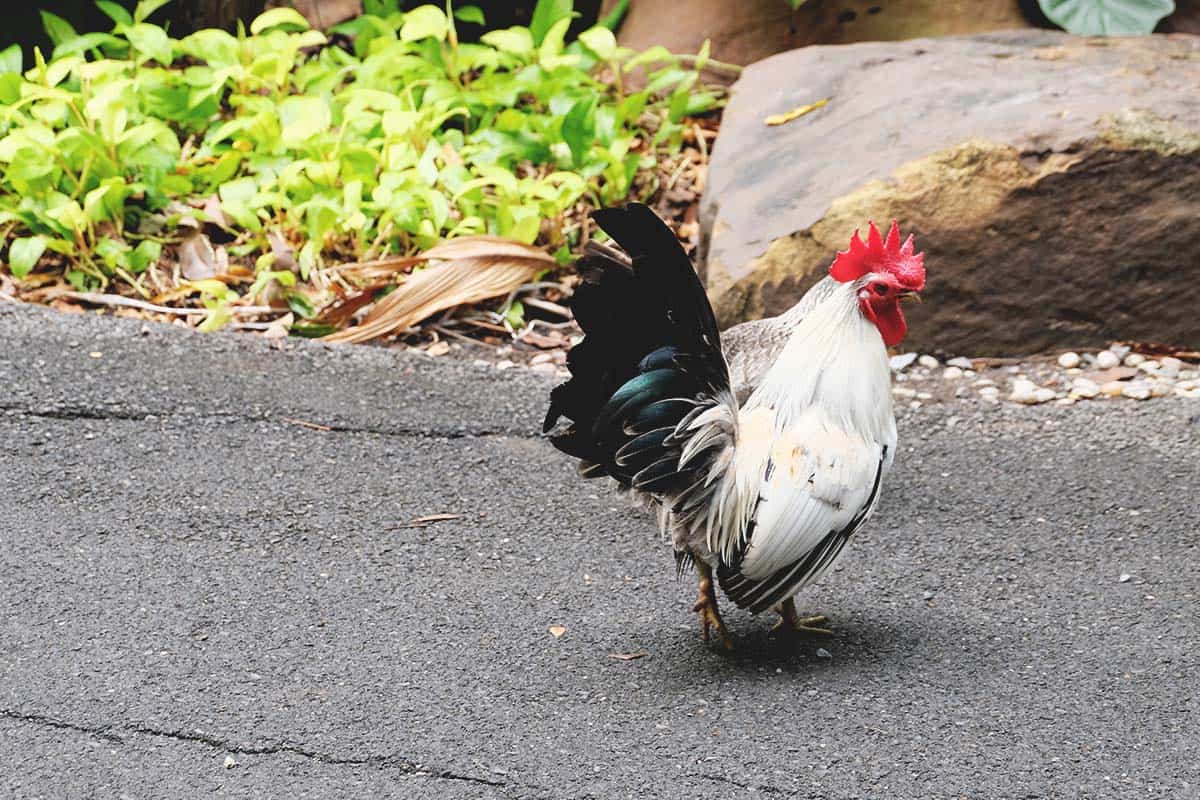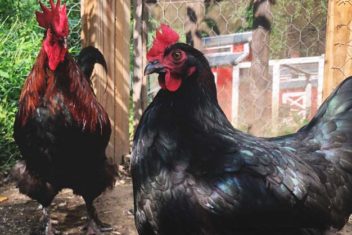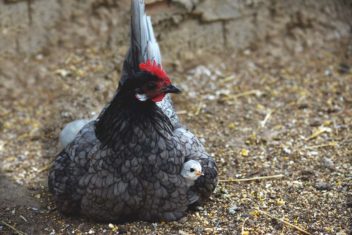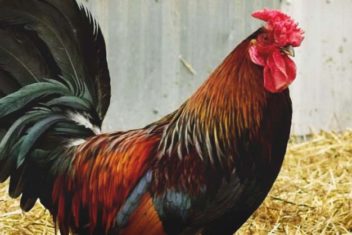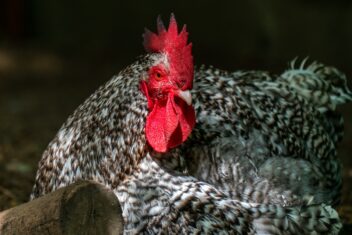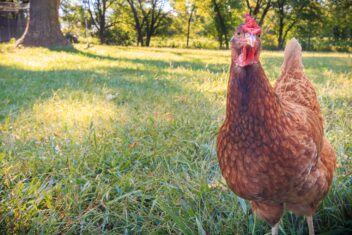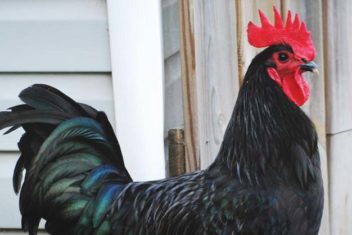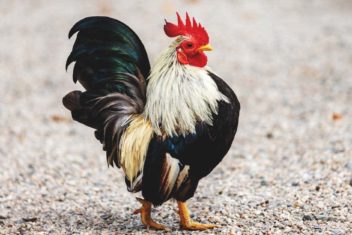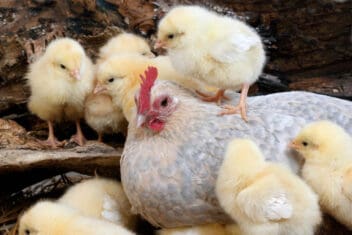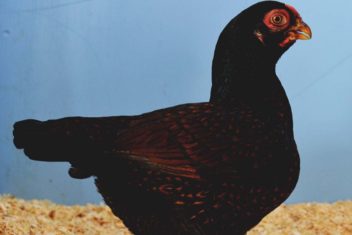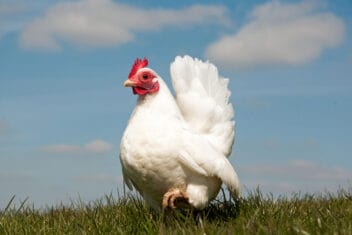If you’ve never seen a Japanese Bantam before, chances are they look a little funky at first glance. A show-quality Japanese Bantam will most likely have a tail that nearly touches the back of its head and very short legs.
Japanese bantams are purely an ornamental breed that does not have much practical use. These chickens do make a good breed for younger chicken handlers due to their small size.
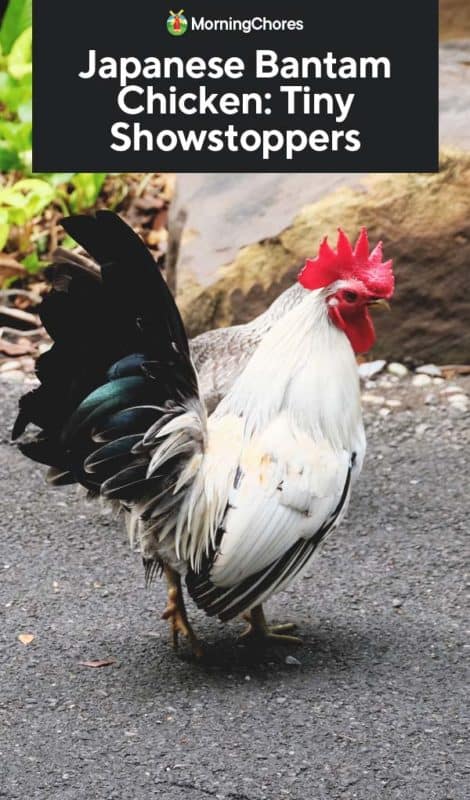
About Japanese Bantam Chickens
Japanese Bantams are also known as Chabo chickens but are better known as Japanese Bantams. These birds are unique and interesting to raise, sure to keep you on your toes and teach you a lot about chicken keeping. Japanese Bantams were accepted into the American Bantam Association in 1874.
For the poultry enthusiast interested in many different color variations, the Japanese Bantam is a perfect candidate. Many different color variations have been accepted into the Standard of Perfection including the birchen grey, black mottled, blue mottled, blue-red, brown-red, buff Columbian, cuckoo, dark grey, golden duck wing, lavender, Miller’s gray, partridge, red mottled, silver-grey, tri-colored, and wheaten.
Japanese Bantam Characteristics
1. Size and Weight
As you have probably gathered, Japanese Bantams are very tiny and petite chickens. Japanese Bantam hens weigh around 1 pound, give or take an ounce or two depending on your line. Roosters will be slightly heavier, averaging about 1.2 pounds.
2. Temperament
Japanese Bantams have a reputation for being sweet and docile chickens with loving dispositions that you are sure to fall in love with. The hens make excellent mothers to their young with tender and protective personalities. If you handle your young Japanese Bantams throughout their life, they should do well with you for showing and showmanship events.
3. Egg Production
Japanese Bantams are an ornamental bird. For the practical farmer looking for eggs, Japanese Bantams won’t fit the bill. These birds are poor layers of very small eggs, averaging 1-2 eggs a week.
4. Meat Production
While there are chickens that produce especially small carcasses for specialty dishes, Japanese Bantams are not an ideal breed for this purpose. If you are seeking a bird to produce a small carcass, consider the Cornish Game hen.
Caring for Japanese Bantams
1. Feeding and Nutrition
From hatch to about 8-12 weeks of age, supply your little chicks with a good chick starter. If you plan on showing your chickens, keeping them on a feed of 19-22% protein will keep them looking beautiful for showing.
Hens will most likely need supplementary calcium for their egg-laying because show diets do not always have enough calcium to sustain them. You can feed hens finely crushed eggshells or oyster shells.
2. Housing and Fencing
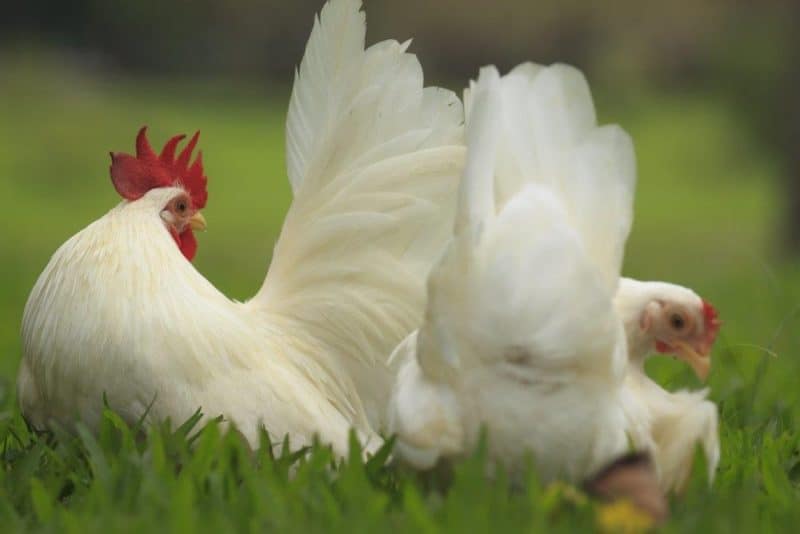
As you may have imagined, bantams don’t require much space in general due to their exceptionally small size. One Japanese Bantam requires about 2 square feet per bird in the coop with 5 square feet per bird in the run.
Housing needs to be clean, warm, and draft-free for your little birds. Japanese Bantams do not have a strong tolerance towards cold weather and need all the protection they can get if you live in a cold climate, including supplementing heat when it is especially cold. Since the wingtips of these little birds often drag on the floor, keep the coop clean so the wing tips do not get soiled.
Lastly, your birds will do best in a covered run. These tiny birds can fly quite well and have the tendency to fly the coop far too often. Many predators will make quick work of these little birds for a quick snack, so covered runs will do best in keeping Japanese Bantam Chickens safe.
3. Breeding
For breeders looking for a challenge, the Japanese bantam is a chicken sure to test your skill and patience. Breeders are constantly working towards the characteristic short legs, high tail, and low wings.
When hatching Japanese Bantam eggs, 25% will perish before hatch due to the lethal gene that causes short legs. An additional 25% will be born with long legs, which are not desirable for breeding stock. 50% of your eggs should hatch with the short legs that belong to Japanese Bantams.
4. Health Issues and Care
Japanese Bantams are not the hardiest chickens out there to be perfectly honest. Genetically, Japanese Bantams are not the strongest, but they will do well with diligent care. Warm, clean, draft-free living environments will go a long way in keeping your birds healthy.
Internal and external parasites can tear a small bantam up more readily than they can a standard sized chicken. Keep a close eye out for signs of worms in poop and mites and lice in feathers.
Japanese Bantam Breed Alternatives
1. Seramas
Seramas are the tiniest breed of chicken in the world, but what they don’t have in size they make up for in personality. These petite chickens are closely related to Japanese Bantams, and they make excellent show birds and pet chickens.
Did You Know?
Japanese Bantams are one of the few bantams that are actually true bantams. True bantams are only found in this little size, and you won’t find a standard, regular-sized Japanese chicken.
This is a chicken with fun and spunky characteristics that will make an excellent pet and show bird. Whether you’re raising a few of these birds as pets and show birds for children or you’re raising an entire flock for a breeding challenge, Japanese Bantams are an exceptional breed.
